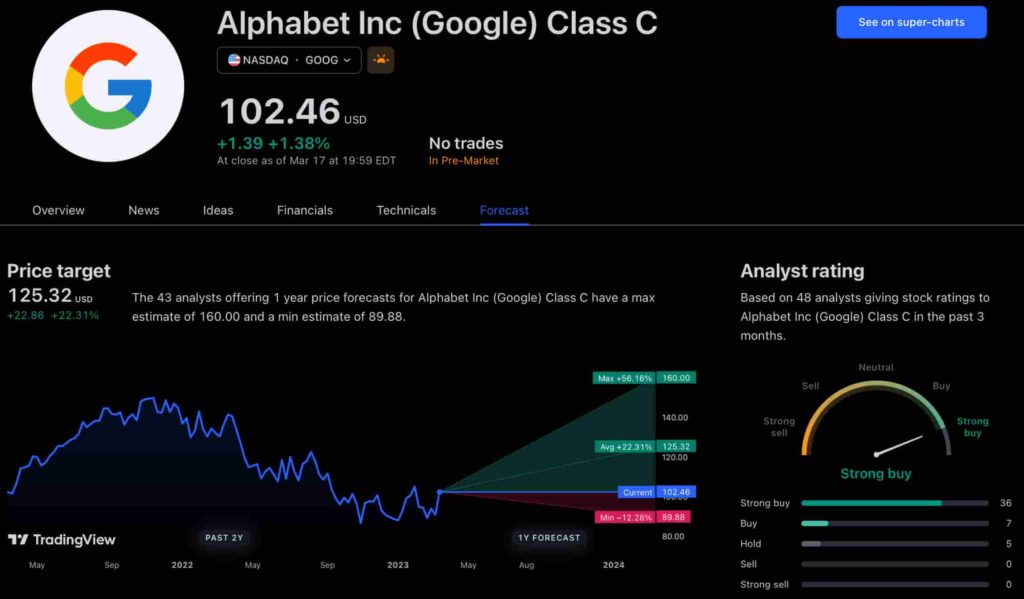The new app is called watchGPT and as I tipped off already, it gives you access to ChatGPT from your Apple Watch. Now the $10,000 question (or more accurately the $3.99 question, as that is the one-time cost of the app) is why having ChatGPT on your wrist is remotely necessary, so let’s dive into what exactly the app can do.
NEWS
Twitter Q2 misses on sales of $683M, loss per share of $0.16 as COVID-19 takes its toll


On the back of a major security breach last week that saw a bitcoin scam ripple through some of the highest profile accounts on Twitter, the company today reported Q2 earnings that point to the ongoing struggle for ad-based social platforms to weather the pandemic storm while (ironically) handling record levels of traffic and the many growing pains that come with that.
Revenues came in at $683 million with a loss per share (GAAP) of $0.01, with both figures down on the same quarter a year ago, compared to analysts’ expectations, and on Twitter’s own guidance. Meanwhile mDAUs — Twitter’s own audience metric denoting monetizeable daily active users — reached a high of 186 million for the quarter.
Analyst consensus was for $700 million in sales, while Twitter expected a 27% higher figure. Adjusted EPS, meanwhile, was negative $0.16 (non-adjusted was negative $1.56), while analysts expected negative $0.01. For some context, in the same quarter a year ago Twitter reported revenues of $841 million on adjusted EPS of $0.20.
A further note on Twitter’s diluted EPS of negative $1.56: it stemmed from a net loss of $1.2 billion, and Twitter explained that this was in part due to a deferred tax asset valuation allowance of $1.1 billion and a non-cash income tax expense based primarily on cumulative taxable losses “driven primarily by COVID-19.”
The numbers underscore just how much advertising — which accounts for the majority of Twitter’s revenues — has taken a hit for the company despite the continuing surge of traffic and popularity for the site itself. That mDAU figure not only bettered Twitter’s figures last year of 139 million, but beat analysts’ average expectation of 173 million.
Advertising specifically accounted for $562 million of its revenues, down 23% on a year ago. Twitter noted that the pandemic and “civil unrest” that led to many advertisers pausing campaigns both contributed to the decline. The U.S., Twitter’s biggest market, saw a decline of 25% in ad spend.
It goes to show the disconnect not only between audience and advertising that still seems to exist — ads ultimately not only follow eyeballs, but the economy, and that has been in decline — but also the disconnect between financials and how a company is discussed in popular discourse.
That is to say, the big story with Twitter in the last three months has been the ongoing questions of quality, health and security on the platform, and how and whether should Twitter disable bad actors while still upholding free speech. That debate will continue for a long time to come, not just on Twitter but in the halls of government in the months ahead.
It’s that focus on improving the product that CEO Jack Dorsey focused on in his statement on this past quarter’s performance.
“Our product work is paying off, with tremendous growth in audience and engagement,” he said. “We grew mDAU to 186 million, a 34% year over year increase in Q2, the highest quarterly year-over-year growth rate we’ve delivered since we began reporting mDAU growth.
“I also want to address the security issue Twitter suffered last week. We moved quickly to address what happened, and have taken additional steps to improve resiliency against targeted social engineering attempts, implemented numerous safeguards to improve the security of our internal systems, and are working with law enforcement. We understand our responsibilities and are committed to earning the trust of all of our stakeholders with our every action, including how we address this security issue. We will continue to be transparent in sharing our learnings and remediations.”
Ned Segal, the CFO, noted that the ad server rebuild should also help the company recover going forward.
“Despite the pandemic, brands have found innovative ways to join the conversation on Twitter to connect with their customers,” he said. “We have completed our ad server rebuild and are making progress accelerating our performance ads roadmap. With a larger audience and progress in ads, we are even better positioned to deliver for advertisers when the live events and product launches that bring many people and advertisers to Twitter return to our lives.”
More to come.
Facebook Faces Yet Another Outage: Platform Encounters Technical Issues Again

Uppdated: It seems that today’s issues with Facebook haven’t affected as many users as the last time. A smaller group of people appears to be impacted this time around, which is a relief compared to the larger incident before. Nevertheless, it’s still frustrating for those affected, and hopefully, the issues will be resolved soon by the Facebook team.
Facebook had another problem today (March 20, 2024). According to Downdetector, a website that shows when other websites are not working, many people had trouble using Facebook.
This isn’t the first time Facebook has had issues. Just a little while ago, there was another problem that stopped people from using the site. Today, when people tried to use Facebook, it didn’t work like it should. People couldn’t see their friends’ posts, and sometimes the website wouldn’t even load.
Downdetector, which watches out for problems on websites, showed that lots of people were having trouble with Facebook. People from all over the world said they couldn’t use the site, and they were not happy about it.
When websites like Facebook have problems, it affects a lot of people. It’s not just about not being able to see posts or chat with friends. It can also impact businesses that use Facebook to reach customers.
Since Facebook owns Messenger and Instagram, the problems with Facebook also meant that people had trouble using these apps. It made the situation even more frustrating for many users, who rely on these apps to stay connected with others.
During this recent problem, one thing is obvious: the internet is always changing, and even big websites like Facebook can have problems. While people wait for Facebook to fix the issue, it shows us how easily things online can go wrong. It’s a good reminder that we should have backup plans for staying connected online, just in case something like this happens again.
NEWS
We asked ChatGPT what will be Google (GOOG) stock price for 2030

Investors who have invested in Alphabet Inc. (NASDAQ: GOOG) stock have reaped significant benefits from the company’s robust financial performance over the last five years. Google’s dominance in the online advertising market has been a key driver of the company’s consistent revenue growth and impressive profit margins.
In addition, Google has expanded its operations into related fields such as cloud computing and artificial intelligence. These areas show great promise as future growth drivers, making them increasingly attractive to investors. Notably, Alphabet’s stock price has been rising due to investor interest in the company’s recent initiatives in the fast-developing field of artificial intelligence (AI), adding generative AI features to Gmail and Google Docs.
However, when it comes to predicting the future pricing of a corporation like Google, there are many factors to consider. With this in mind, Finbold turned to the artificial intelligence tool ChatGPT to suggest a likely pricing range for GOOG stock by 2030. Although the tool was unable to give a definitive price range, it did note the following:
“Over the long term, Google has a track record of strong financial performance and has shown an ability to adapt to changing market conditions. As such, it’s reasonable to expect that Google’s stock price may continue to appreciate over time.”
GOOG stock price prediction
While attempting to estimate the price range of future transactions, it is essential to consider a variety of measures in addition to the AI chat tool, which includes deep learning algorithms and stock market experts.
Finbold collected forecasts provided by CoinPriceForecast, a finance prediction tool that utilizes machine self-learning technology, to anticipate Google stock price by the end of 2030 to compare with ChatGPT’s projection.
According to the most recent long-term estimate, which Finbold obtained on March 20, the price of Google will rise beyond $200 in 2030 and touch $247 by the end of the year, which would indicate a 141% gain from today to the end of the year.
Google has been assigned a recommendation of ‘strong buy’ by the majority of analysts working on Wall Street for a more near-term time frame. Significantly, 36 analysts of the 48 have recommended a “strong buy,” while seven people have advocated a “buy.” The remaining five analysts had given a ‘hold’ rating.

The average price projection for Alphabet stock over the last three months has been $125.32; this objective represents a 22.31% upside from its current price. It’s interesting to note that the maximum price forecast for the next year is $160, representing a gain of 56.16% from the stock’s current price of $102.46.
While the outlook for Google stock may be positive, it’s important to keep in mind that some potential challenges and risks could impact its performance, including competition from ChatGPT itself, which could affect Google’s price.
Disclaimer: The content on this site should not be considered investment advice. Investing is speculative. When investing, your capital is at risk.
NEWS
This Apple Watch app brings ChatGPT to your wrist — here’s why you want it

ChatGPT feels like it is everywhere at the moment; the AI-powered tool is rapidly starting to feel like internet connected home devices where you are left wondering if your flower pot really needed Bluetooth. However, after hearing about a new Apple Watch app that brings ChatGPT to your favorite wrist computer, I’m actually convinced this one is worth checking out.
-

 PPC5 days ago
PPC5 days ago19 Best SEO Tools in 2024 (For Every Use Case)
-

 MARKETING7 days ago
MARKETING7 days agoStreamlining Processes for Increased Efficiency and Results
-
SEARCHENGINES6 days ago
Daily Search Forum Recap: April 17, 2024
-

 PPC7 days ago
PPC7 days ago97 Marvelous May Content Ideas for Blog Posts, Videos, & More
-

 SEO6 days ago
SEO6 days agoAn In-Depth Guide And Best Practices For Mobile SEO
-

 MARKETING6 days ago
MARKETING6 days agoEcommerce evolution: Blurring the lines between B2B and B2C
-
SEARCHENGINES5 days ago
Daily Search Forum Recap: April 18, 2024
-
SEARCHENGINES4 days ago
Daily Search Forum Recap: April 19, 2024















